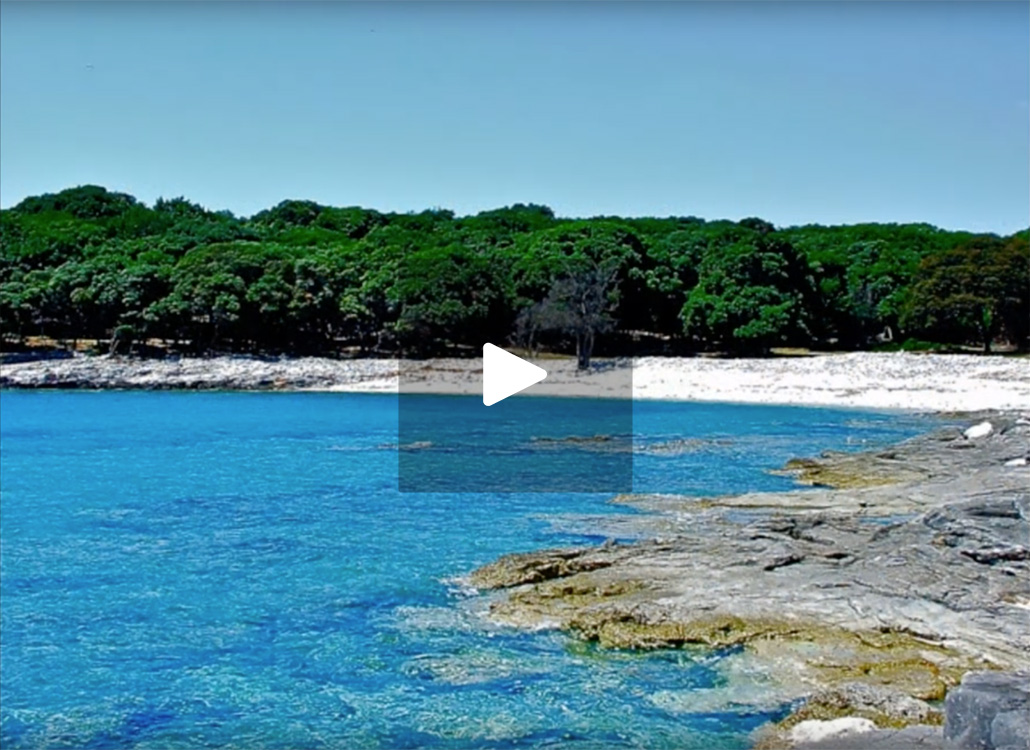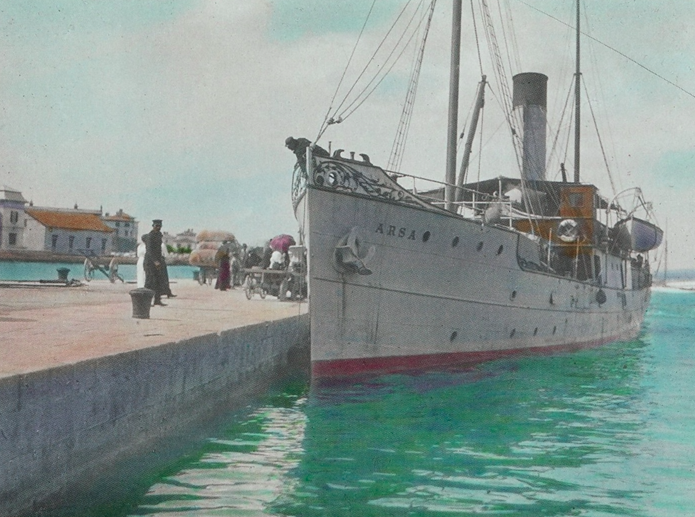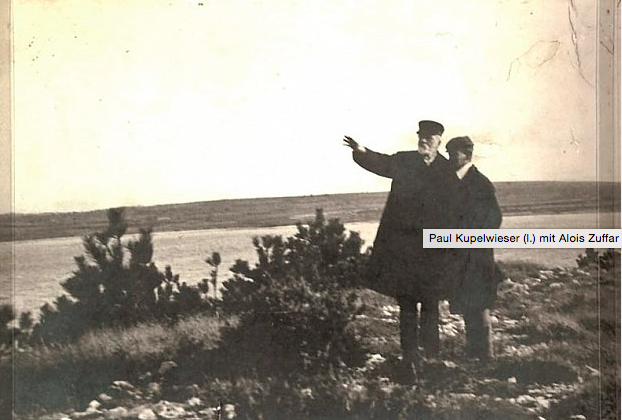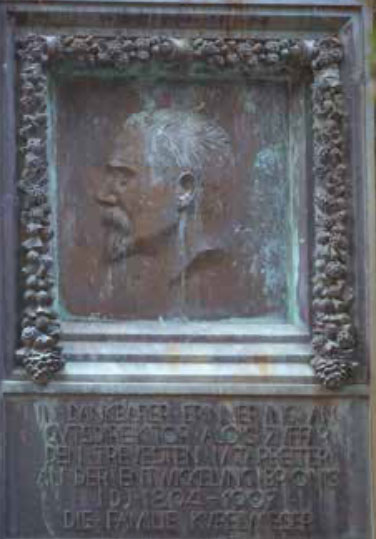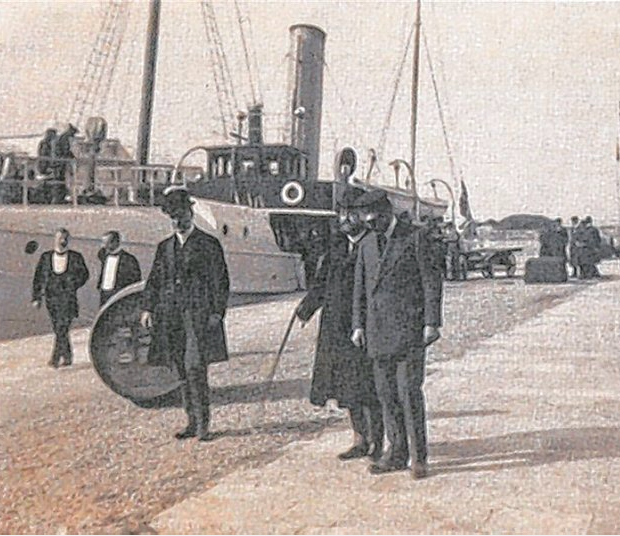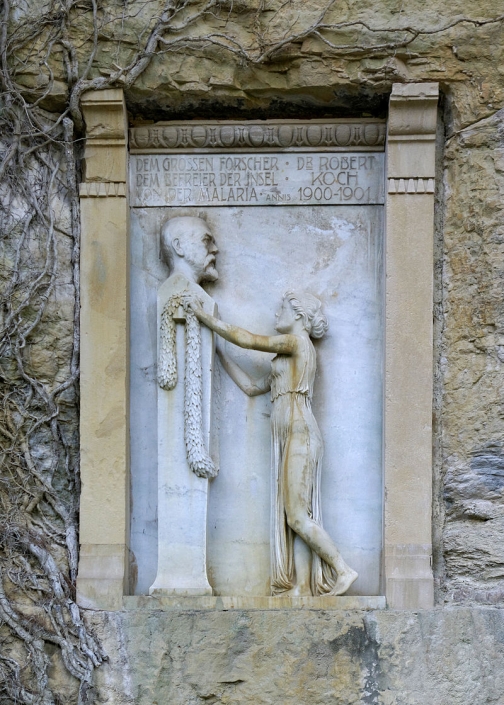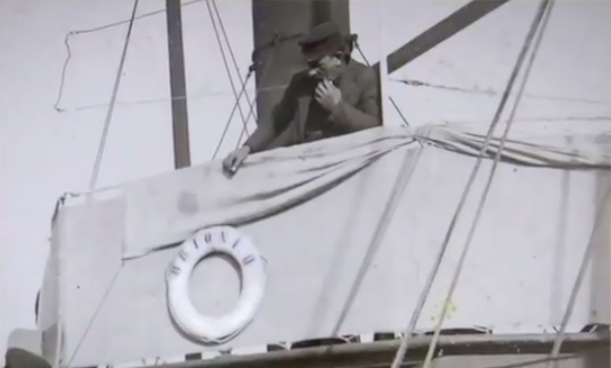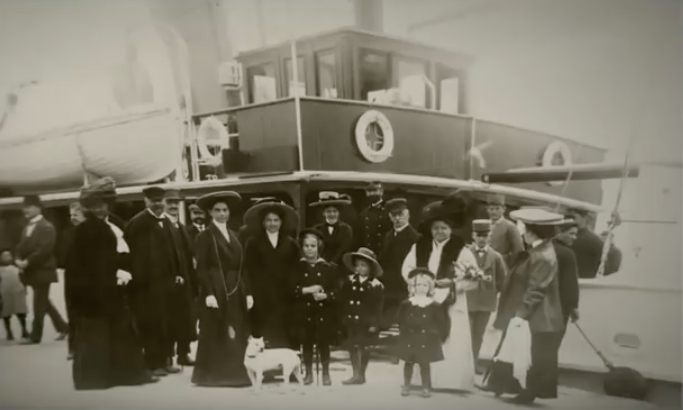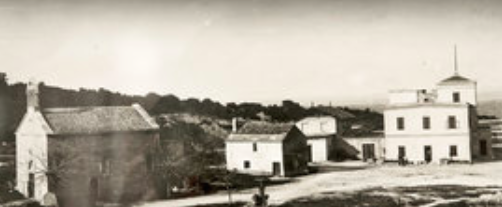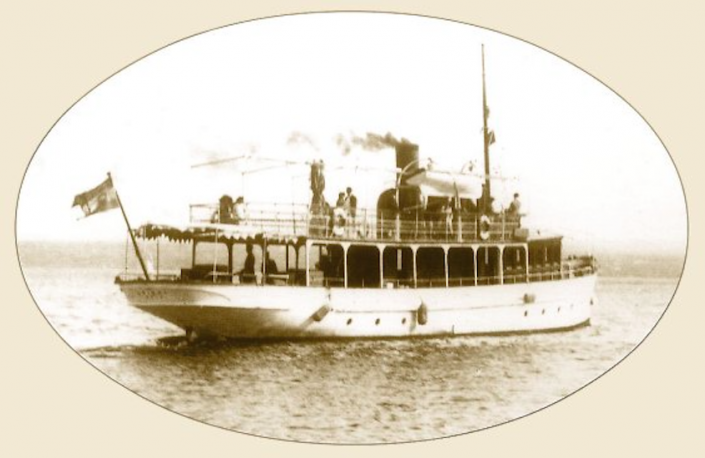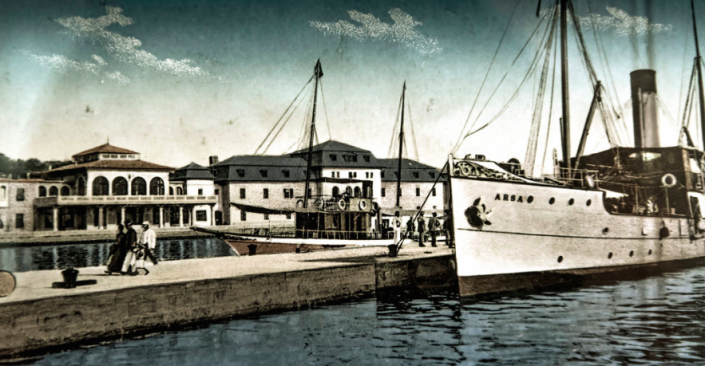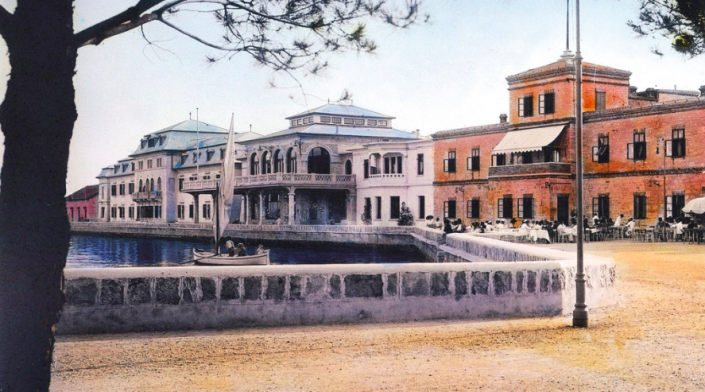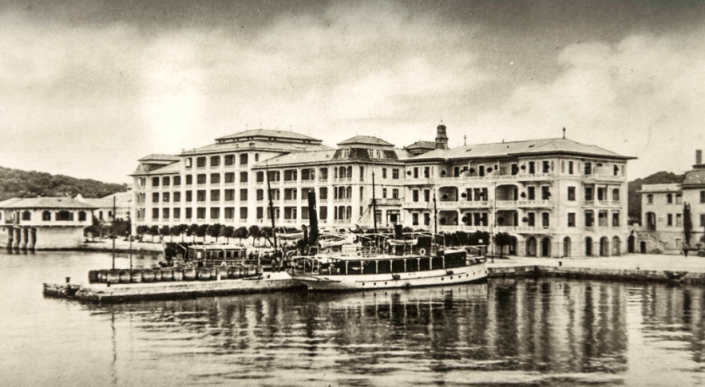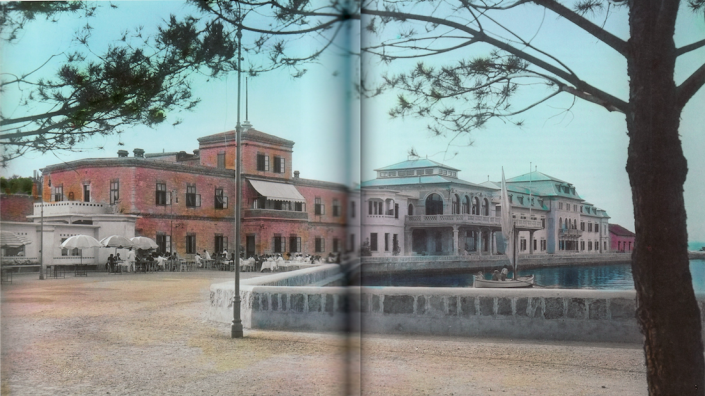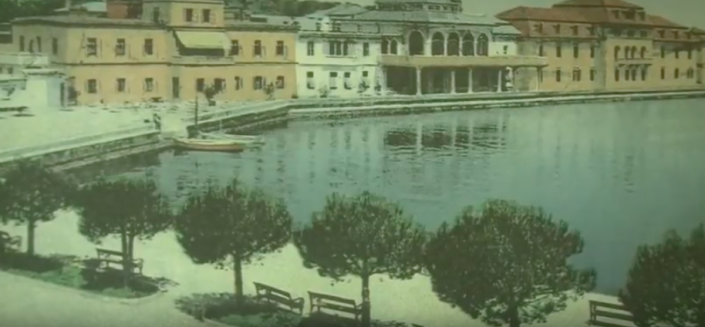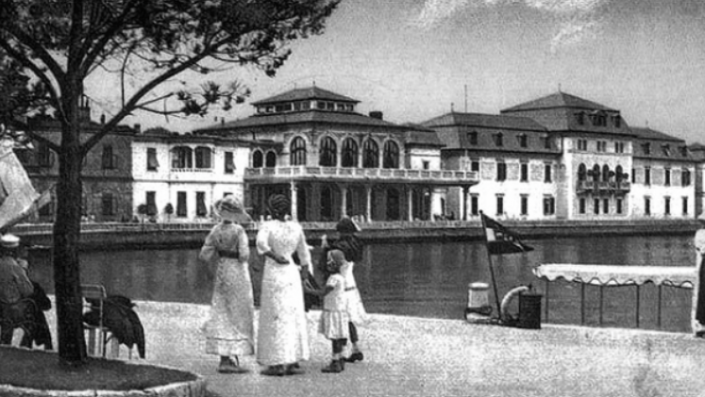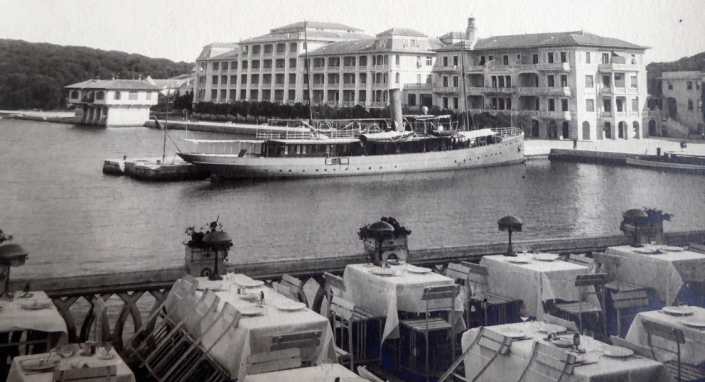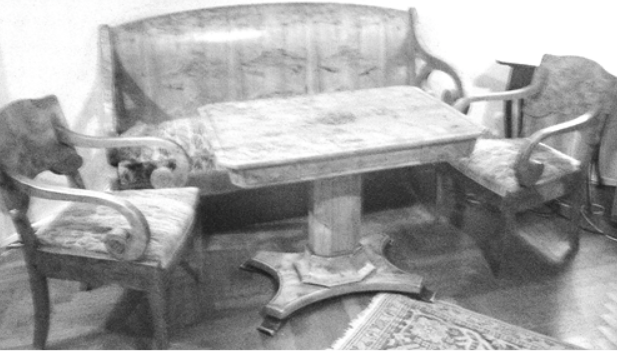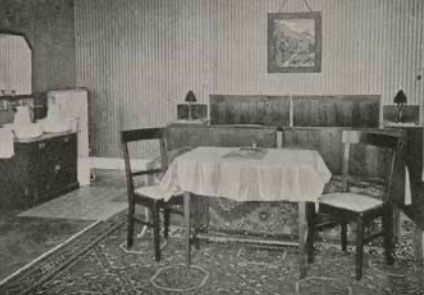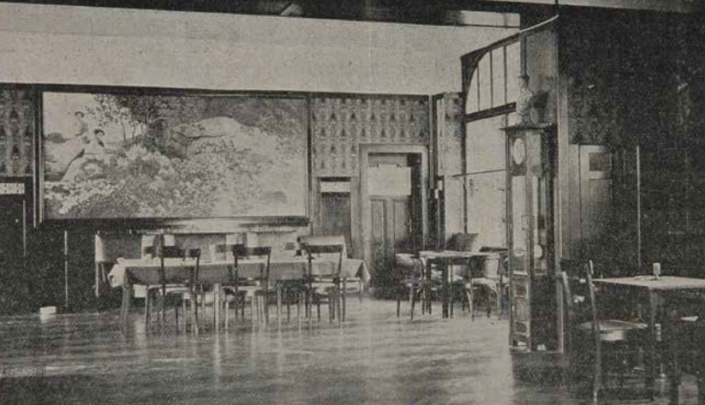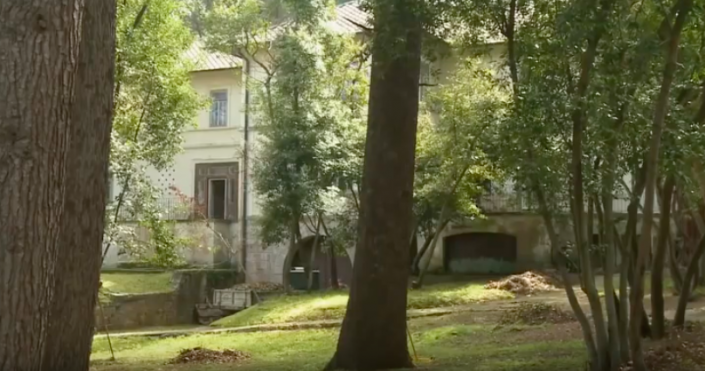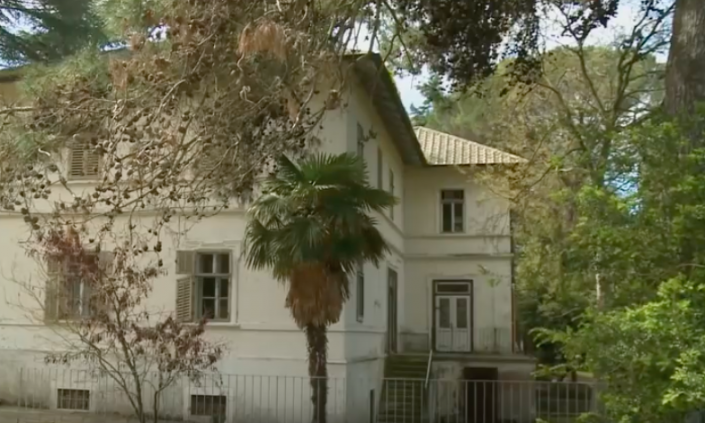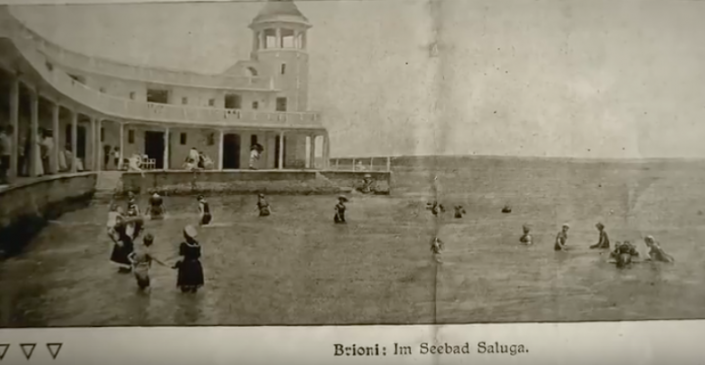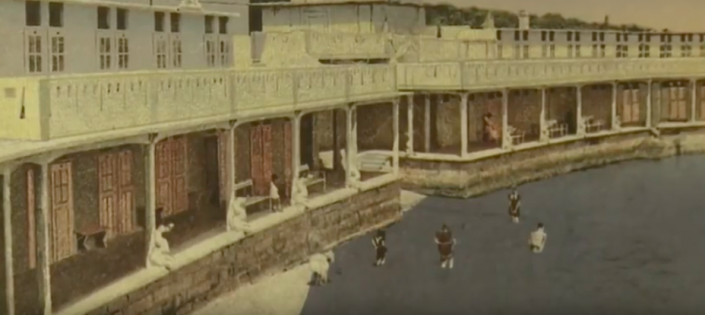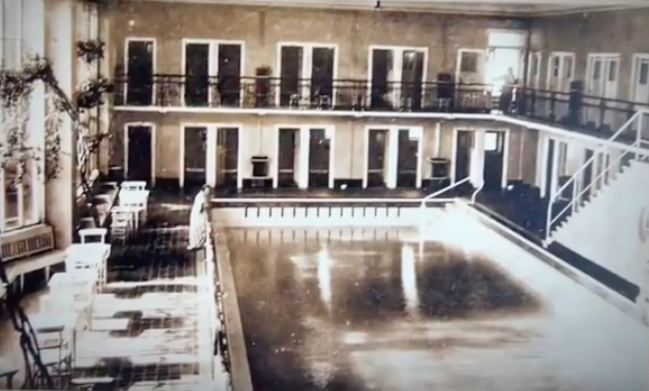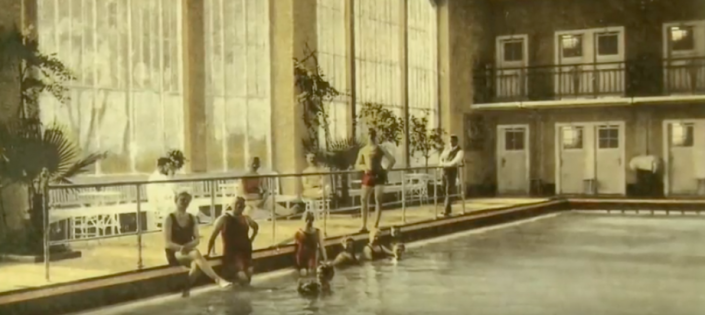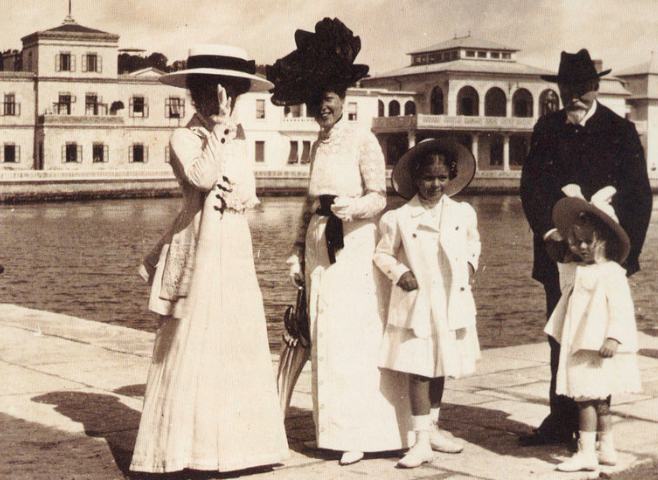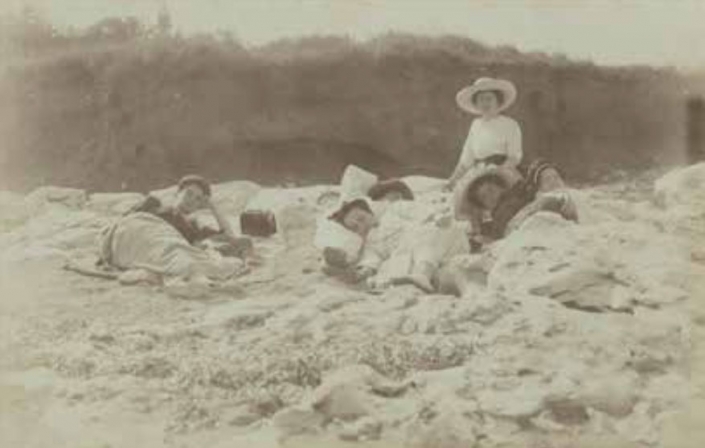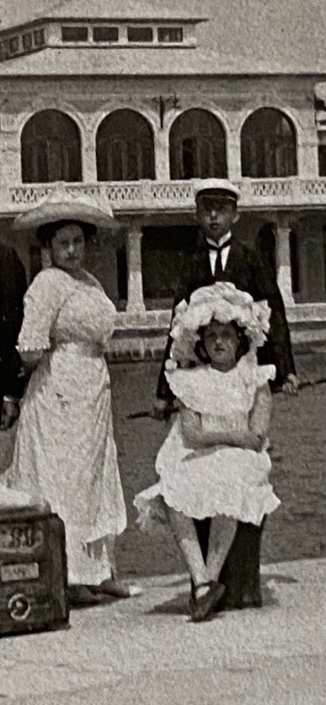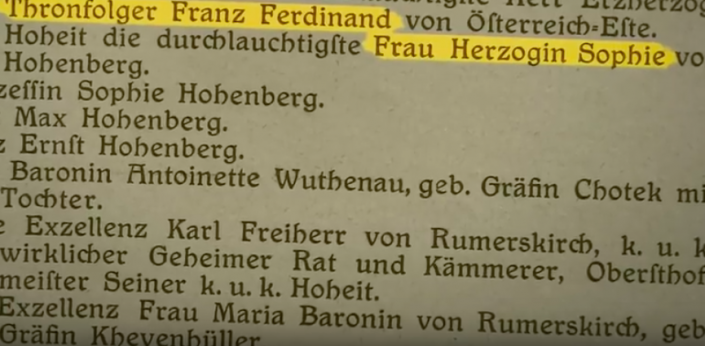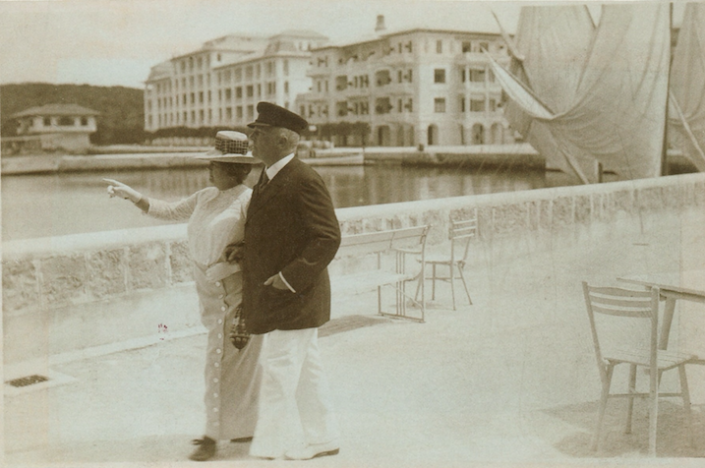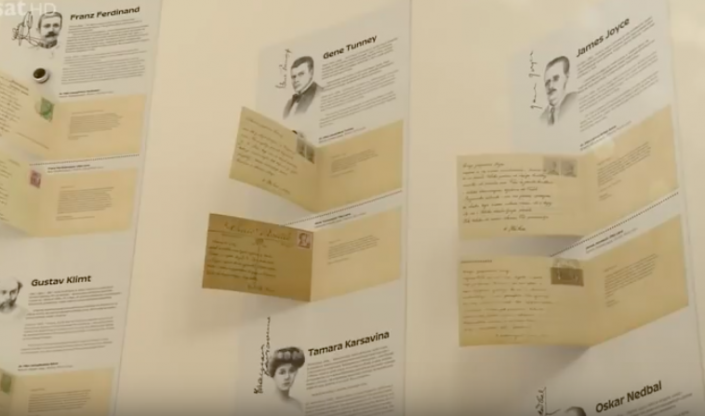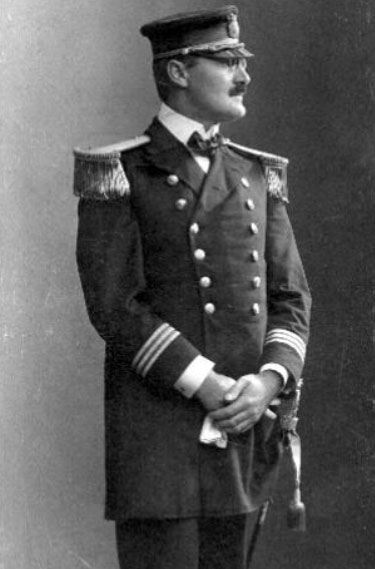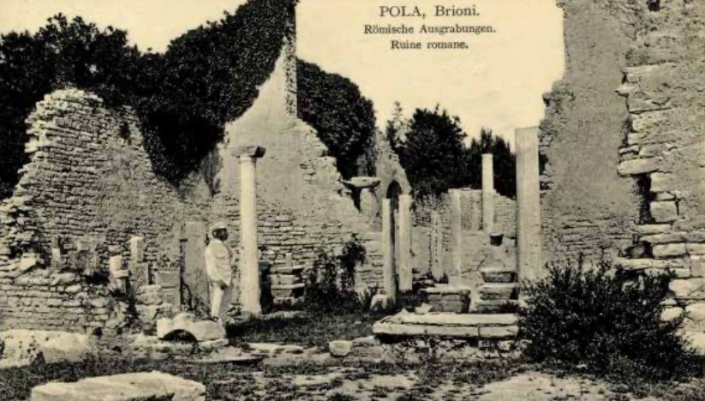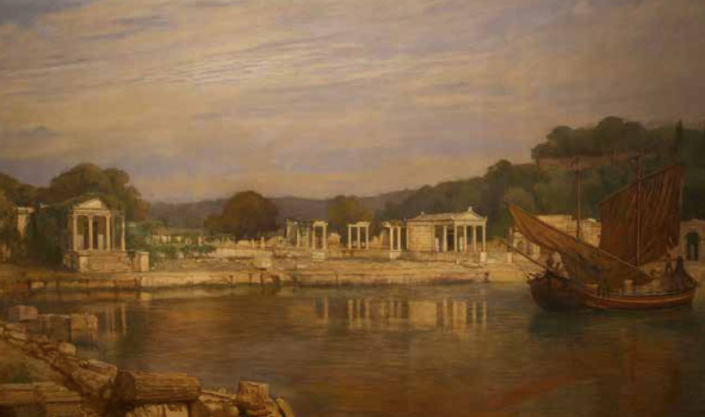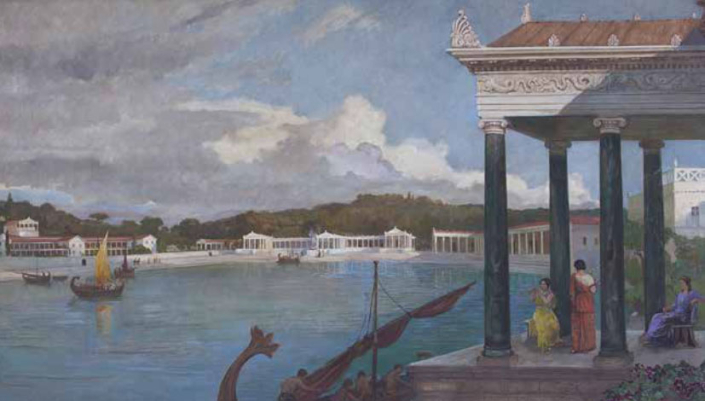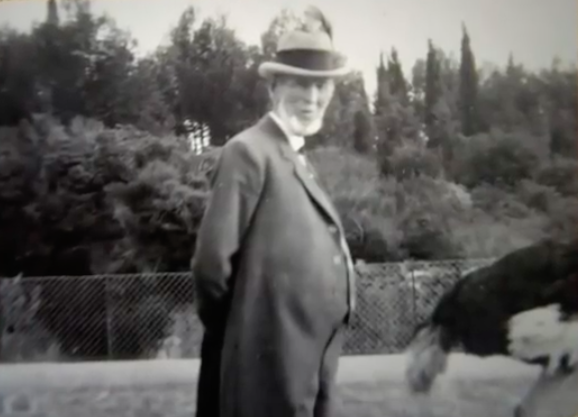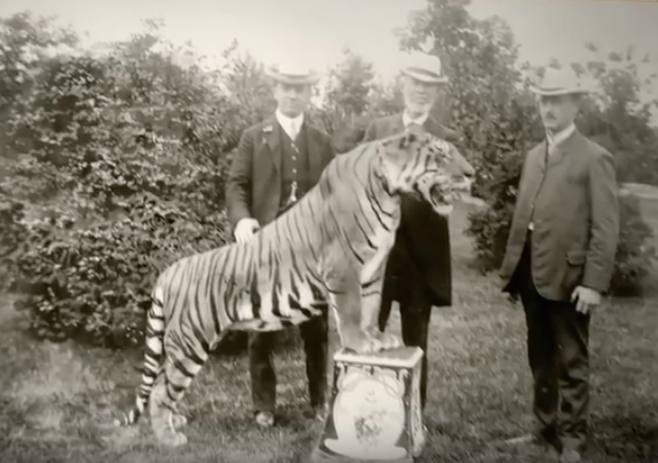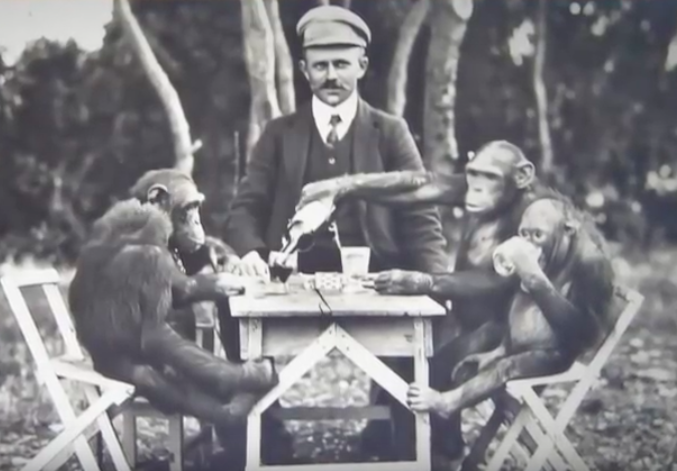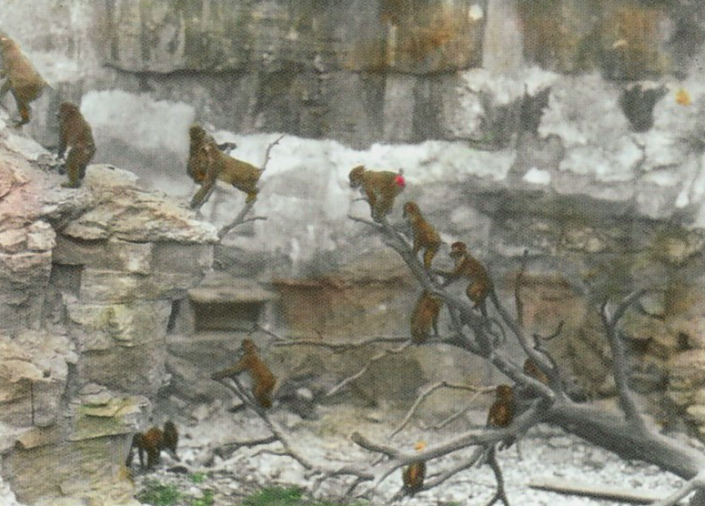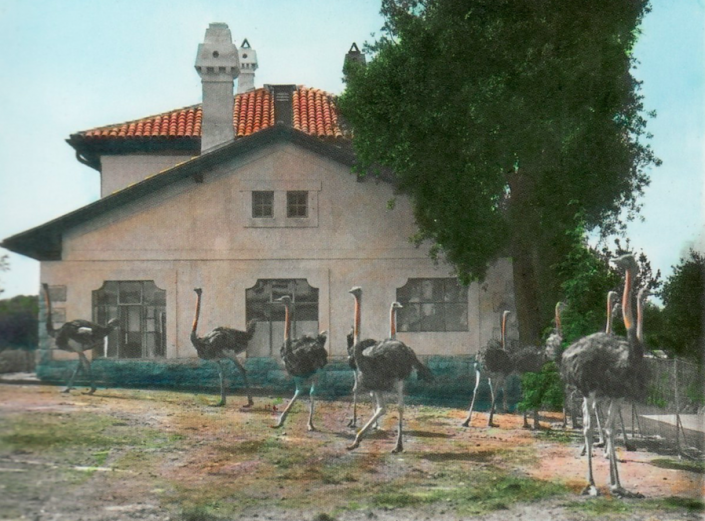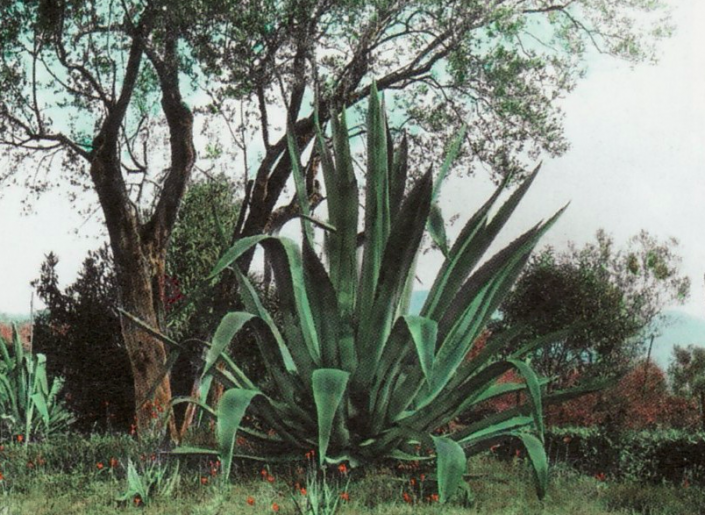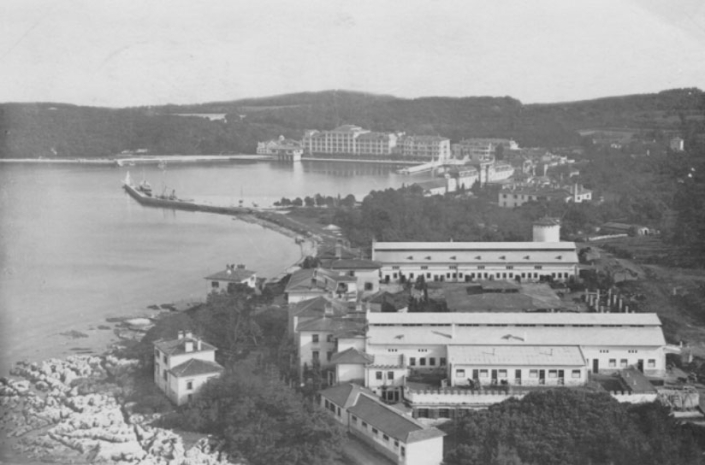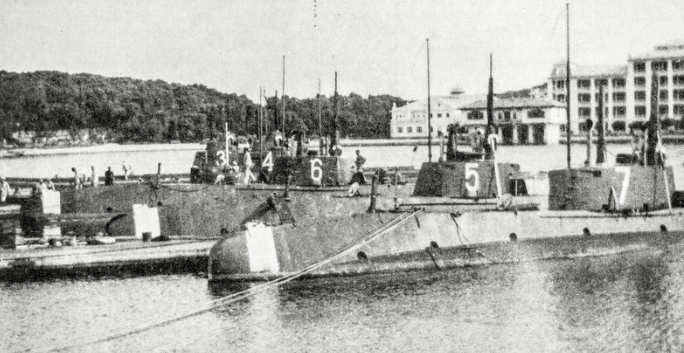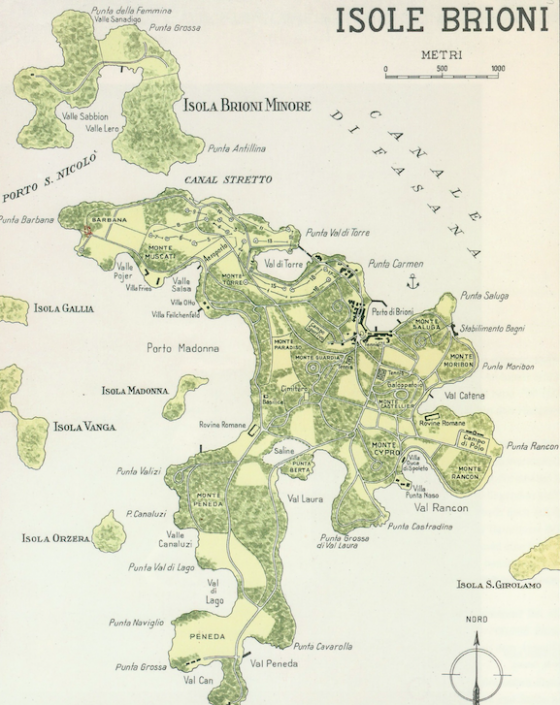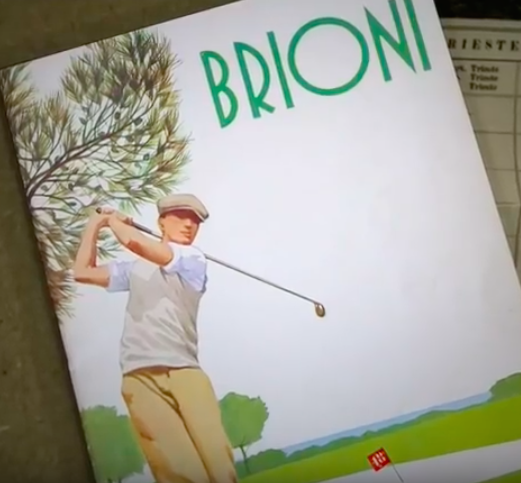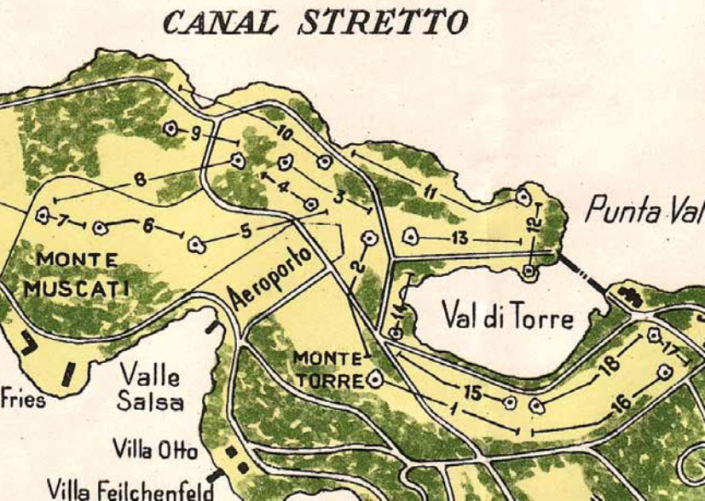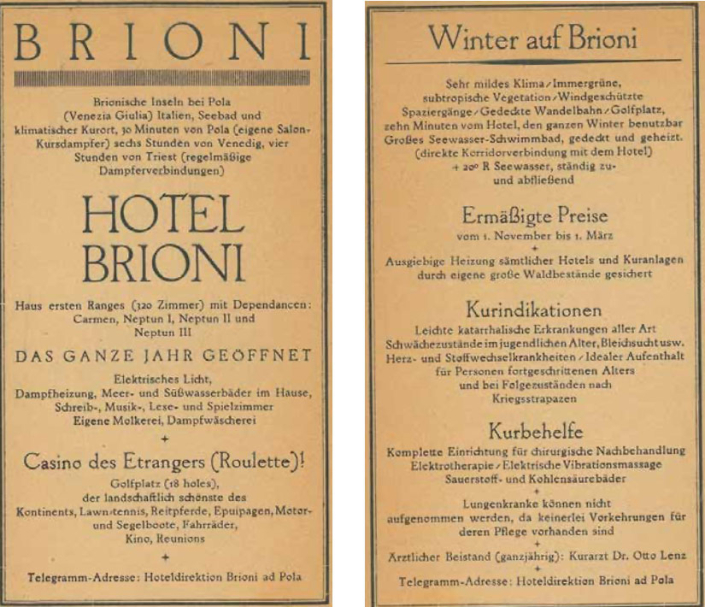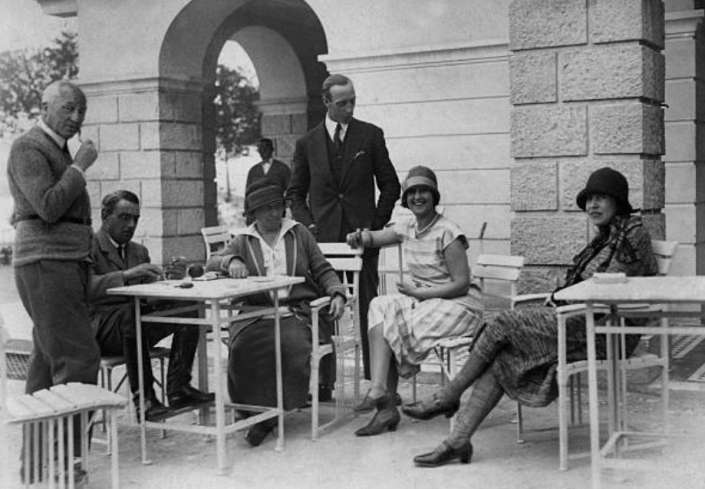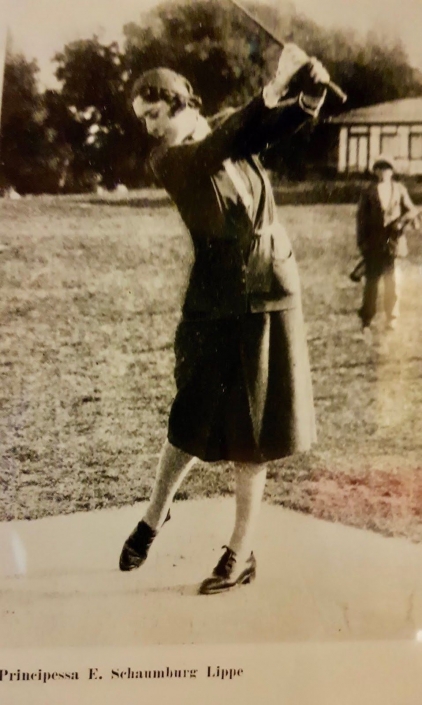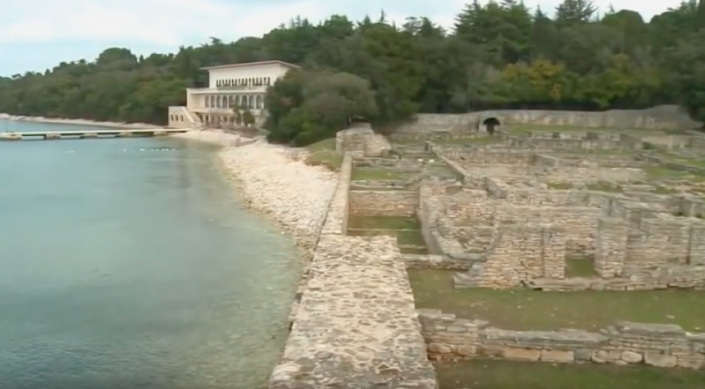Paul Kupelwieser
The most famous son of a family of small industrialists from Piesting in Lower Austria was Leopold, who became professor of history painting at the Viennese Academy and gained international reputation for his altarpieces. Paul was born in 1843 as the ninth child of the couple Leopold and Johanna Kupelwieser and studied iron processing at the “Bergakademie” in Leoben. After completing his studies, he began an extremely successful career as an industrial captain and renovator of smelters and steelworks. For Albert Salomon Anselm Freiherr von Rothschild he managed the iron and steel works in the lower Austrian town of Ternitz, in Teplitz in Bohemia and in Vítkovice in Moravia. Above all, the largest Austrian ironworks in what was then the Kingdom of Bohemia had experienced a tremendous upswing under his directorship. From there, war material was also delivered to the naval shipyard in Pula. It can be assumed that he discovered the Brioni Islands during a business trip. When in 1893 he finally was tired of the battle for orders, the intrigues and speculations, he decided to create something lasting as an independent entrepreneur. Since he also feared that the talents of his sons Carl (21) and Leopold (17) were not sufficient for a university education, and the two could succumb to the temptation of frivolous handling of money, he wanted to leave them “values bound to useful work and already somehow secured by them”. Furthermore, he wanted to prove that economically useful development was also possible in the neglected Austrian south. When the run-down Brionian Islands (about 700 hectares of land off the southwest coast of Istria) were offered to him for sale, he travelled by the Istrian state railway to Pula, from there boarding the carriage to Fažana and rowing a fishing boat to Brioni Grande, eager to buy. The stay in the marshy area was regarded as extremely dangerous because of a deadly form of malaria, which did not deter him at all, however, “I had the impression that it would be possible to make that clod of earth healthy, fertile and very beautiful in its vegetation with the help of a little understanding, patience and, of course, more money”. So, he bought – within only thirteen days – twelve of the fourteen Brionian Islands.
An expensive retirement
75,000 guilders (corresponds to about 700,000 euros) – that was the purchase price which Paul Kupelwieser paid to a Mr Wildi from Triest in the summer of 1893 for twelve of the fourteen islands of the Brijuni/Brioni archipelago according to his own statements. The price corresponded to three of his annual salaries as a general manager of the steelworks. At that time, the entire archipelago was overgrown with bush forest that was hardly economically usable and covered with rubble from the quarry, as Venice (until 1797 the islands were Venetian, then part of the Austrian coast) had supplied itself with building material from there for centuries. At the time of the purchase, firewood was the only yield, but even that was not abundant due to a recent forest fire. A construction ban imposed for military reasons further reduced the value: on the top of the highest elevation of the main island Brioni Maggiore/Veli Brijun, almost 50 metres above sea level, there was a fortress named after Admiral Tegetthoff (the victor of Lissa had his fleet set up in the Fažana Strait on July 19, 1866), which was only guarded by two soldiers a day due to the risk of malaria. “If I had realized at that time that that luxury of a job at old age, as it seemed to me, would go far beyond my relatively modest financial means, I would not have had the courage to take it over” (Memoirs Paul Kupelwieser). The purchase of the islands was in fact comparatively small with regard to the further investments that would have to be made afterwards and which were also highly risky, as they also required borrowed capital, the security of which was far from guaranteed.
Design of an island-dream
Paul’s younger brother Max (former smelting engineer in Witkowitz) and his two sons Carl and Leopold began right at the beginning, together with a dozen woodworkers, to carry out initial clearing work and to build shelters and water cisterns. In order to advance cultivation and create the necessary infrastructure, he appointed Alojz Čufar/Alois Zuffar, a native of Albona, director of goods. He was recommended as a forestry expert and “man of great decency” to the builder Kupelwieser and in 1894 he moved to the overgrown islands with his wife and children. From the very first day he worked tirelessly and faithfully on the realization of his employer’s ideas. He was a forester on Brioni (had planted about 10.000 trees), surveyor, master builder and road engineer in one person. After the radical clearing, gentle forest landscapes, rolling meadows, promenade paths for every season and atmospheric avenues with exotic plants were created. The transport of the selected plants and seeds (which Kupelwieser had sent from London and Paris to Brioni) was carried out by the Austro-Hungarian Navy. It was also necessary to create fertile land for cattle breeding, field cultivation, vineyards and orchards. Debris from the Venetian quarries had to be transported on rails in tipping wagons to provide new terrain for residential and farm buildings, parks and agriculture. Just before the turn of the century, the first 14 rooms were available to guests. But still malaria and poor drinking water supplies were constant threats and obstacles for tourism.
Malaria
The biggest stumbling block on the way to becoming a luxurious guest paradise was undoubtedly the permanent malaria risk. Paul Kupelwieser brought that souvenir with him from his first visit to his new property, which led him to the brink of death during a lecture tour in London. Instead of returning to Brioni a few weeks later, he was only able to travel in January 1894. After a few years, he became aware of the malaria research of Professor Robert Koch reading about it in a newspaper note and asked the later Nobel prize winner for medicine to continue his research on Brioni. Koch agreed and Kupelwieser provided him with an experimental station. In November 1900, Professor Frosch and his assistant Dr. Elsner were sent to the south to look at the project. On the evening of their arrival, after immediately taking blood samples from the porters and head waiters, the results were presented: The mosquitoes belonged to the dangerous Anopheles family. The samples were examined in Koch’s Berlin laboratory, where he was a pioneer in the development of bacteriological techniques for disease control. Dr. Frosch led the local research and treatment of the infected persons, focusing on the application of quinine. The eradication of the mosquitoes that transmitted the pathogens was then tackled from the bottom up. Water surfaces were sprayed with petroleum, which was burnt down to destroy the larvae. Ponds and swamps were drained by filling them with gravel from the existing quarries. Paul Kupelwieser had overcome his first major hurdle in 1902 and Robert Koch received the Nobel Prize for Medicine in 1905. From that time on, the additional opening as a tourist destination during the summer months could take place, enabling year-round tourism, which was an inestimably important factor for profitability. Josef Engelhart’s monument in honour of Robert Koch on the island still shows the great gratitude of the Kupelwieser family.
Financial difficulties
Paul was soon regarded as a rich man who afforded himself an eccentric luxury. The tax authorities became aware of him and he and his elder brother Karl, the famous Viennese lawyer and founder of the “Radiological Institute” in Lunz am See, were accused of tax evasion. The reason for that would be an (erroneously) fictitious loan of 200,000 guilders from Karl to Paul. “The tax commission estimated my fortune at seventeen million guilders and accordingly I was taxed, annoyed and offended and could only with much effort and a lot of graft get back a part of the taxes which were far too high and demanded under threat of execution.” Memoirs Paul Kupelwieser. Many of Paul’s friends also considered the Brioni company to be economically unreasonable and refused the urgently needed increase of loans already granted. Instead, he was given supervisory board positions in industry to improve his income situation. Karl Wittgenstein, whose sister Bertha was married to Paul Kupelwieser’s brother Karl, finally helped out by paying Paul a “low” price for land to build two villas on Brioni Maggiore. The financial situation at the turn of the century was more than tense, and in spring 1901 Paul even had to break off a private trip due to financial reasons.
Water
In 1903 Paul Kupelwieser had a water pipeline built on the seabed, through which Brioni could now be supplied with the precious liquid. That was done using a plot of land on the mainland near Fažana, which he had wisely acquired a few years earlier. A short time later, in cooperation with the municipality of Pula, a further, even better quality and more productive source of water was tapped in form of today´s “Public Private Partnerships”, which supplied Pula and Brioni with drinking water.
Transport
The first guests came to Veliki Brijun as early as in 1896, but it was only after the malaria had been eliminated that the number rose steadily from 1903 onwards. Although Paul Kupelwieser already had two boats in use for transfers between the mainland and the islands, the need for a more comfortable and modern means of transport that could meet the needs of wealthy and elitist guests could no longer be denied. He therefore ordered the construction of a new ship, which was launched at the San Marco shipyard in 1908 and whose development and construction also had to be of great interest to his designers. After all, it was the first passenger ship to be powered by a diesel engine, a world novelty! The use of that new propulsion technology revolutionized shipping, as liquid diesel fuel took up considerably less storage space than coal, significantly extending the operating range and minimizing costs. Thus, inland Austria has not only set milestones in the development of modern seafaring with the development of propellers, but also with the introduction of diesel propulsion for passenger ships. The “Brioni” then performed her duties reliably for decades, survived both world wars and was verifiably in service until the 1960s.
Hotel business
After all prerequisites had been met, Kupelwieser concentrated on the further expansion of Brioni. In 1902, the young architect Eduard Kramer (Otto Wagner‘s pupil, known for his revolutionary designs and a building style with new materials and constructions) participated in the construction of the boathouse for the first time. From then on, he planned the hotel complexes in secessionist style, equipped with the most modern conveniences. For the Montanist Kupelwieser, reinforced concrete was the material of choice. After the already existing small hotels “Brioni” and “Neptun I”, the hotel “Carmen” was built in 1908, the hotel “Neptun II” in 1910 and finally the large hotel “Neptun III” in 1912, with which the total capacity increased to 320 rooms. Besides, 10 villas for Europe’s elite – all of them, of course, including bathrooms, electricity and telephone. In 1913, the “Winter Swimming Pool” was added, known as the first hotel indoor swimming pool in Europe, with a “wide, extremely noble, bright room into which the warmed sea water flooded, with galleries for spectators, with seats for those resting under palm trees and flowers”. A special attraction was the zoo with antelopes, zebras, giraffes, a tiger, an ostrich farm and the “Affenakademie” (monkey academy), which the well-known Hamburg zoo director and animal trader Carl Hagenbeck had set up next to an acclimatization station for the trade with exotic animals on Brioni (that project was no longer continued after Hagenbeck’s death in 1913).
The hotel business was embedded in a comprehensive infrastructure: a stud farm, farmhouses, stables, warehouses, a model farm, a dairy (the genuine Brioni “Imperial cheese” was regarded as the finest dessert cheese according to the French method as a special delicacy) and vineyards with Burgundy, Riesling, Malvasier, Refosco and Bordelaise grape varieties (the 15 % alcohol heavy “Brioni wine” was distributed in own sales offices in Vienna, Graz, Prague and Lemberg). In addition to houses for civil servants and workers, the functioning microcosm also included a school and a hospital. Otto Lenz from Vienna was chosen as a suitable physician. Paul Kupelwieser personally accompanied the doctor to “Geheimrath” Koch for training at his Berlin institute. In 1903, the spa physician Dr. Otto Lenz opened his daily outpatient clinic in the boathouse with its impressive pharmacy and surgical instruments. Historical education was not neglected either, and an archaeological museum was built. Very soon, during earthworks, ancient wall remains were discovered and the expert for archaeology and preservation of monuments, Anton Gnirs, who at that time was teaching at the naval school in Pula, enthusiastically took over the exploration of the antiquities. Among the many discoveries from all eras there is a Roman villa complex from the 1st century A.D. in the bay of Verige – a jewel of ancient agricultural art. The remains of a Roman settlement around the bay of Val Catena, including a temple centre, can be found on an area of about one hectare, as well as various traces of the Illyrians (3000 BC), Late Antiquity, the Ostrogoths, Byzantines, but also from the Carolingian period and the Venetian epoch.
Elitist holiday paradise of the Habsburg monarchy
Famous guests were of great importance for the image, at that time as they are today. Only aristocrats, industrialists, landowners and successful freelancers such as physicians, painters, writers, composers and scientists could afford to go on holiday. Due to the relationship with Bertha Wittgenstein from the rich industrialist family, which also brought forth Ludwig, the philosopher, and Paul, the after a war injury one-armed piano virtuoso, there was a connection to the highest industrialist circles and brought wealthy guests to the island. Brioni attracted not only crowned heads and the high aristocracy, but also personalities who had become rich in the monarchy or who were considered artists, for example. Naval officers from the nearby main port of the Austro-Hungarian Navy were also invited to the dance festivals dressed in their more beguiling than martial gala uniforms. Kupelwieser offered his guests an incomparable holiday paradise that left nothing to be desired in terms of luxury. In 1906, the Austrian imperial family discovered the island for recreation, above all Archduchess Maria Josepha, the mother of the later (and last) Austrian Emperor Karl I. Saxony’s King Friedrich August also enjoyed the climate and the sea during his holiday and Emperor Wilhelm II visited that paradise in 1912. The high nobility automatically brought the money aristocracy and the upper middle classes with them. Many of Austria’s great sons and daughters were associated with Brioni. For example, Marcel Prawy told of his first childhood memory at his last performances at the Vienna State Opera: the tricks of the monkey girl Missy on Brioni. The poor monkey child refused food and died after his warden was sent to military service in 1914. Or Thomas Mann, while working on “Felix Krull” he travelled with his wife Katja and brother Heinrich to Brioni, where the news of the death of the composer Gustav Mahler also reached him, whereupon he cut out Mahler’s picture from the newspaper and used it to describe Aschenbach in “Death in Venice“. Sometimes, however, the relationship with the elite turned out to be extremely difficult. For example, the Austrian heir to the throne fell in love with Brioni to such an extent that he wanted to claim it for himself. Together with his court he visited the island from 1910 – 1912 for several weeks in spring. The climate proved to be so good for his asthma that he repeatedly began to press Kupelwieser to sell him everything. Paul Kupelwieser had to fear being expropriated if he resisted the Archduke’s plans. In the winter of 1911 negotiations about a purchase failed and finally Franz Ferdinand (after his father confessor had appealed to his conscience) was content to take over a remote part of the island for a new fairytale castle by the sea. On June 28, 1914, the Austrian heir to the throne and his wife Sophie died as a result of the shots fired in Sarajevo. However, his relationship with Paul Kupelwieser remained extremely tense until his assassination.
Economic adventure
Although, or because, Brioni had still not made a profit about a dozen years after the acquisition, that is in 1905, Paul embarked on another economic adventure by acquiring land at the southern tip of Istria to develop the Bay of Medulin into a commercial port. According to research, it did not seem unrealistic at the time that larger industries would settle there. Between 1906 and 1908, he bought real estate worth around 700,000 crowns (approximately three million euros) and another 500 hectares of completely neglected agricultural land, on which a modern, profitable agriculture was supposed to have developed – though only with further capital injections. He speculated that he would be able to resell most of the land to the Ministry of Commerce in Vienna without making a profit, thereby increasing the value of the remaining land. Vienna, however, waved off, because “economic rationality alone would be too little, since one could not win any local votes that would be significant”. In addition, in the autumn of 1907, shortly after the beginning of the “Medolino adventure”, the prudent operations director Alois Zuffar died. In gratitude for his pioneering work, the Kupelwieser family commissioned the celebrated Viennese artist Josef Engelhart (married to Dorothea Mautner von Markhof, the seventh child of Carl Ferdinand Ritter Mautner von Markhof) to design a monument. The management was transferred to the two sons, Paul himself took care of their expansion and public relations. In autumn 1912, after the completion of “Neptune III”, Paul finally ran into considerable financial difficulties. Only his brother Karl was willing to help him out, but under the condition of strict conditions: the unprofitable land acquired on the mainland had to be sold as quickly as possible, the production of the average quality wine (son Leopold was responsible for it) had to be reduced, the fodder for the livestock farming had to be bought cheaper and the number of employees had to be reduced substantially. Karl also considered Zuffar’s successor and his nephew Carl to be incapable of managing the company. While Paul only saw a liquidity problem, his brother doubted the profitability of the whole company and felt that the existing assets were no longer worth the acquisition costs. Therefore, in order to solve the financial and business misery before the outbreak of the world war, the foundation of a public limited company was already considered, since thereby the debts with relatives and friends would be converted at least partially into equity capital (Dept-Equity-Swapt for the purpose of broadening the equity base).
Meeting point of the Haute Volée around 1910
Over time not only the finest society came together in the holiday paradise, but also the upper middle classes found their way to the old Austrian south. The prices for accommodation were not or only insignificantly higher than those of the other up-and-coming tourist centres of the then Austrian Riviera. March and April were the high season months, but the particularly mild winter temperatures (just over 6 degrees on average) allowed guests to enjoy the warm sun on the south-facing terraces protected to the north. The big “hype” around Brioni took place after the increase of the hotel capacity in a period of only a few years before the outbreak of the First World War, because from 1912 onwards guests could travel comfortably from Vienna directly to Pula in the railway sleeping car.
World War I
The First World War interrupted the tourist flow and all at once transformed the island paradise into a military fortress. The Austro-Hungarian Navy moved into the hotels and Brioni became a submarine base and training centre. Since the islands lie north of the entrance to the former main port of the war navy, they were also directly endangered after the declaration of war of Italy to Austria-Hungary at the end of May 1915. Tourists, women and children had to leave the island. At that time, it was accepted relatively calmly – the war was supposed to last only a short time. Since the Austrian coast of Istria was never conquered by the Italians, Kupelwieser managed to keep the agricultural estate alive during the war without tourism. He was able to keep his head above water by supplying agricultural products to the navy, his spa physician Dr. Lenz operated a small military hospital and the navy moved a submarine base to the area. After the end of the war Brioni found itself on Italian territory again – after all with more or less intact installations. In October 1914 Paul Kupelwieser had estimated his fortune at 10 million crowns (about 40 million euros), which was probably unrealistic against the background of the war that had already broken out.
The Carl Kupelwieser Era
In 1919 Paul Kupelwieser died in Vienna at the age of 76. His spirit of adventure had not let him go until the end, he searched for gold veins in Serbia and fell ill in the process. His son Carl then took over the management of the company, which had then been transformed into a public limited company. He tried to come to terms with the new rulers, called himself Carlo and endeavoured to reposition Brioni for an international clientele. A seaplane for faster guest transfers to Triest was purchased. He opened a casino, had the tennis courts extended, built the largest golf course in Europe at the time and bred polo horses (which later turned out to be particularly loss-making, as the expensive horse husbandry entailed financial difficulties and tax debts). Although the polo tournaments were always a source of noble guests, the company’s indebtedness gradually increased. The vineyards alone, which his father had laboriously cultivated on cleared soil, were then of no commercial value. Italy had enough wine and there were high customs barriers to Austria. When the collapse of the New York Stock Market (“Black Thursday“, autumn 1929) triggered a global economic crisis, the consequences for Brioni were unstoppable. He also had to go to trial against the Italian authorities for alleged credit debts. He had been accused of not having properly repaid a loan that had been raised during the war. It seemed to be about exchange rate problems but also about outstanding reparation payments. According to family tradition, the Austrian Schöllerbank as well played no glorious role. In 1930 Carl saw no way out and put an end to his own life.
Italy, Mussolini and the Second World War
From 1918 to 1943 the islands belonged to Italy. After further unsuccessful attempts with external managing directors, the Kupelwieser Brioni Corporation became insolvent at the beginning of 1936 and was converted into Italian state property – the Italian state took over the debts and the island. In 1938, the islands of Brioni became a military exclusion zone because of their immediate proximity to the military port of Pula, while military administrations took command. After Mussolini’s fall and Italy’s armistice with the Allies in September 1943, Brioni was occupied by German troops, with the result that the islands were bombed several times by the Allies in 1945. During a bombing raid on April 25, 1945, two hotels, many villas, the seaside resort of Saluga and a large part of the port facilities were seriously damaged or completely destroyed, leaving the islands abandoned. Then Tito’s troops landed on Brioni.
Tito’s Refuge
After 1945, the area (with the largest part of Istria) fell to Yugoslavia. From 1947, the Yugoslavian head of state and party Josip Broz Tito – he was president for lifetime – made the islands his preferred place of residence. All this took place under exclusion of the public, the islands were strictly protected as military restricted areas. The remains of the old buildings were demolished, a part re-erected or renovated. He built his official residence on Veli Brijuni in the “White Villa ” and his private home on the small island of Vanga. There he spent many months of the year, his ”intimate friends” ensured that the president and marshal of the Socialist Federal Republic of Yugoslavia did not lack anything. Only state guests for meetings and conferences as well as celebrities are gladly seen. Countless kings, ministers (a photo exhibition shows pictures of over 60 heads of state) and stars such as Sophia Loren, Gina Lollobrigida and Richard Burton/Elisabeth Taylor came to visit the West’s favourite dictator in a relaxed atmosphere. The first in a long list was to be Ethiopia’s Emperor Haile Selassie I in 1954. In 1956 Tito, together with the Indian Prime Minister Nehru and Egypt’s Head of State Nasser, signed the agreement to found the Non-Aligned States (“Brioni Declaration“), and in 1966 he dismissed the Serb Aleksandar Ranković, police chief of Yugoslavia, for a long time the second most powerful man in the party, from his posts. Tito had luxurious domiciles awaiting his guests, such as Villa Jadranka, White Villa and Villa Brionka. In 1978 Tito built a 9-hectare safari park in the northern part of the island, home to the many exotic animals brought to him as gifts at state visits. He seldom missed the opportunity to personally show the Mediterranean flora and historical places to his visitors.
The Legacy
It was only after Tito’s death in 1980 that the main island Veli Brijun was made accessible to the public again. It is still the summer residence of the Croatian president and is frequently used for state banquets. The 10-day war between Slovenia and Belgrade ended there in 1991 with the “Brioni Declaration“. Since 1983 the archipelago has been a national park, the entire archipelago was declared a nature reserve in 1989, making it impossible to build new buildings. The national park impresses with the diversity of its nature. There are around 680 plant species on the island, many of which are endangered in the rest of Istria (for example the large oak forests) and which can still develop freely there. In addition to various native Mediterranean species, palm trees and cacti have also been planted generously. An ancient olive tree, dated 1600 years using the C-14 method, is one of the special attractions of the nature park. More than 250 species of birds, including rare cormorants, populate the island. A bird sanctuary was built for them in a saline. Rabbits and imported deer, roe deer, European mouflons, countless peacocks, lizards, owls, seagulls and cicadas are all settled on Brioni. An ethno park invites you to get to know a typical Istrian farm with oxen (Boškarin), sheep (Pramenka), donkeys, and goats. The safari park at the northern end of Veli Brijuns presents elephants, lamas, zebras, Nilgau antelopes, Somali sheep, holy Indian cows and donkeys. There is a car ban on Brioni, hotel guests can rent bicycles, day trippers can use a non-rail-bound slow train. One walks among ” friendly ” wild animals through a well-kept park landscape and can still enjoy playing golf. For investors, however, for whom the now abandoned hotel complexes from Kupelwieser times are waiting, the status means severe restrictions. More than a few have already expressed their interest there. Prince Ernst August of Hanover, for example, who wanted the whole archipelago for himself and his Caroline of Monaco alone, or Umberto Angeloni with his luxury men’s fashion brand “Brioni“, who would like to create an exclusive refuge for the rich and beautiful. For some years now at least polo has been played again and horse races have been held. Plans for an 8000 m2 large wellness resort, casino, golf resort and all kinds of five-star hotels and – restaurants are criticized sharply by environmentalists.

